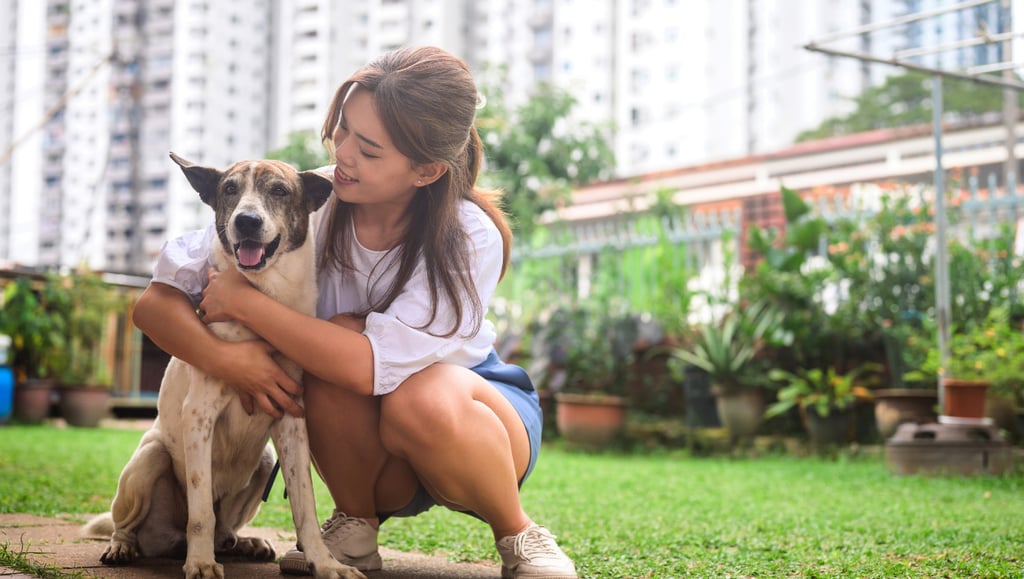Urban pets: the essential guide for modern pet parents
Discover how to provide a happy and healthy life for your urban pet! Our essential guide offers practical tips on space optimization, routine, health, and safety in the city for dogs and cats.
8/28/20255 min read


Living in a big city brings countless advantages—but also unique challenges, especially when you’re the guardian of an urban pet. The fast-paced lifestyle, smaller living spaces, and the dynamic city rhythm require a special kind of care to ensure your four-legged companion enjoys a happy, healthy, and fulfilling life.
This guide was created to help you navigate these challenges, offering reliable and practical advice so you and your urban dog or urban cat can thrive together in a metropolitan environment.
Understanding the challenges of urban pets: space, routine, and safety
The first major challenge for urban pets is limited space. Apartments and homes without backyards are a reality for many pet parents. But don’t worry—having less space doesn’t mean your pet has to live a limited life. The key is optimizing your environment and compensating for the lack of outdoor area with the right activities and mental stimulation.
Another big factor is the modern pet parent’s busy routine. Long work hours often mean less time for walks, play, and socialization. Safety is also a concern—the heavy traffic, exposure to unfamiliar animals, and hazards in public areas all require extra attention.
But don’t feel discouraged! With the right planning, knowledge, and strategies, you can absolutely offer an amazing life to your urban pet. Remember-it’s about quality of life, not the quantity of space.
Optimizing space: creating the perfect home for your four-legged friend
Your apartment can easily become a paradise for your urban pet when well organized. Here’s how to optimize your space for dogs and cats:
For Dogs:
Cozy Bed & Corner: Make sure your dog has a comfortable place to rest, away from drafts and loud noises.
Interactive Toys: Invest in toys that stimulate your dog’s mind—like slow-release treat dispensers or puzzle feeders. They help reduce boredom and anxiety.
Vertical Organization: Use low shelves or small storage units to organize toys, freeing up floor space.
For Cats:
Scratching Posts & Towers: Cats love to climb and scratch. Vertical scratching posts and wall-mounted shelves are great ways to keep your cat active and entertained.
High Spots: Cats feel safe when they can observe from above. Install cat shelves or keep the top of a cabinet accessible.
Litter Box Placement: Keep the litter box in a quiet, easily accessible area—private, but not isolated.
A stimulating environment is vital for your pet’s physical and mental health. Lack of stimulation can lead to destructive behavior, excessive barking or meowing, and anxiety.
Adapting the routine: managing time for a happy urban pet
Routine is the foundation of an urban pet’s well-being. Even with a busy schedule, you can maintain a balanced and healthy routine.
Essential walks (for dogs):
Daily walks are non-negotiable. They’re not just for bathroom breaks—they’re also for mental stimulation, exercise, and socialization. Aim for at least two walks a day, one of them longer so your dog can explore freely. If your schedule is too tight, consider hiring a trusted dog walker.
Daily playtime:
Set aside time to play—whether it’s fetch, tug-of-war, or chasing a feather wand. Interaction strengthens your bond and helps your pet release energy.
Consistent schedule:
Pets thrive on predictability. Feed, walk, and play at consistent times to reduce stress and anxiety.
Indoor enrichment:
When the weather isn’t great or you can’t go outside, mental stimulation indoors is key. Try puzzle toys, hide treats around the house, or introduce new textures and scents. Keeping your pet’s mind active is just as important as physical activity.
Urban health and well-being: prevention is key
City life exposes pets to more animals, pollution, and potential stress factors—so health care must be proactive.
Regular Vet Visits: Keep vaccinations and deworming up to date. Ask your vet about parasite prevention—fleas and ticks are common in urban areas.
High-Quality Nutrition: Choose a diet suited to your pet’s age, size, and activity level. Your vet can recommend the best options.
Hygiene Routine: Regular baths, grooming, and nail trimming are essential. Pollution can affect your pet’s coat and skin.
Weight Control: Urban pets are more prone to obesity due to smaller spaces and less exercise. Watch food portions and encourage activity.
Safety first: protecting your pet in the big city
Urban environments present specific risks, so safety must always come first.
Identification:
Your pet should always wear a collar with an ID tag containing their name and your phone number. Microchipping is highly recommended-it’s a permanent way to ensure your pet can be safely returned if lost.
Safe walks:
Proper Leash and Collar: Use a sturdy leash suitable for your dog’s size. Avoid retractable leashes in crowded areas.
Stay Alert: Watch for traffic, holes, glass, and other hazards. Avoid peak hours in busy locations.
Controlled Socialization: Allow social interaction with other dogs in secure spaces like dog parks, always under supervision.
Apartment safety:
Window and Balcony Screens: For cats, these are essential. They prevent dangerous falls caused by curiosity or prey drive.
Toxic Products: Keep cleaning products, medicines, and toxic plants out of reach.
Wires and Cables: Protect electrical cords to avoid accidents.
Socialization and behavior: building a balanced urban pet
A well-socialized pet is a happier and calmer one. Proper socialization helps your pet handle the variety of sounds, smells, and people found in cities.
Start Early: Expose puppies and kittens gradually to new environments, sounds, and people in a positive way.
Training Classes: Dog training classes help teach commands, improve manners, and enhance the bond between pet and owner. Use positive reinforcement techniques.
New Environments: Walk your dog in different parks and streets to help them adapt to changing surroundings.
Managing Noise: If your pet gets scared by fireworks, horns, or thunder, talk to your vet or a trainer for desensitization strategies.
Avoiding Boredom & Separation Anxiety: Pets left alone too long can develop anxiety. Try interactive toys, leave soft music playing, or hire a pet sitter. Cats benefit from climbing structures and hunting toys.
Essential urban pet resources: making life easier
City life offers many services and products designed for modern pet parents.
Pet Shops & Veterinary Clinics: Find reliable professionals near you and keep emergency contacts handy.
Dog Walkers & Pet Sitters: Perfect for busy owners—always choose trustworthy professionals with good references.
Apps & Online Communities: Join local pet groups or apps to exchange experiences and tips, or even arrange group walks.
Urban Pet Products: From training tools and indoor potties to GPS collars and filtered water fountains, there’s a growing market for urban pet essentials.
The bond above all: the essence of a happy urban pet
At the end of the day, the foundation of a happy and healthy urban pet is love, attention, and connection. Every tip and strategy in this guide is meant to strengthen that relationship.
City life can be challenging, but the joy of having a loyal companion by your side makes every effort worthwhile.
Your pet relies on you to meet their needs and provide quality of life. Observe their behavior, spend time together, and always stay open to learning and adapting.
Want to make your pet’s city life even better?
Explore our blog for more insights on pet nutrition, training, and well-being—and don’t forget to share your experiences in the comments!
Health
Tips for a healthy and balanced life.
© 2025. All rights reserved.
Well-being
Privacy Policy
Terms and conditions
